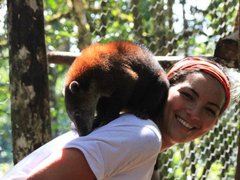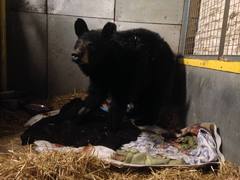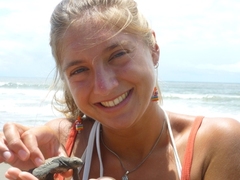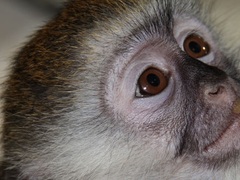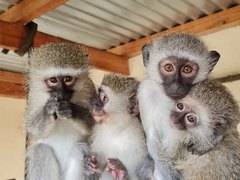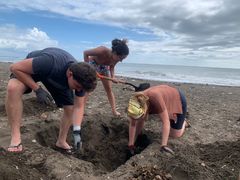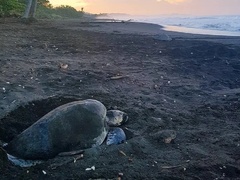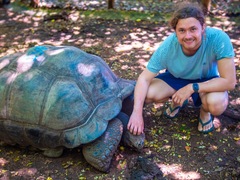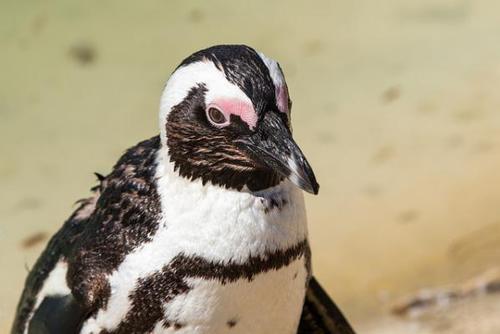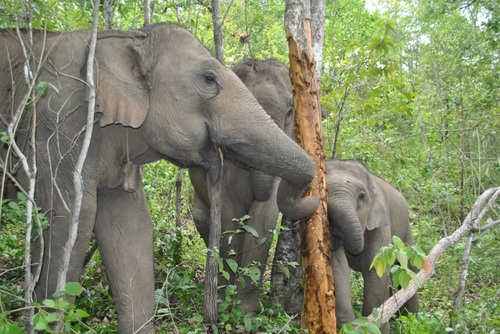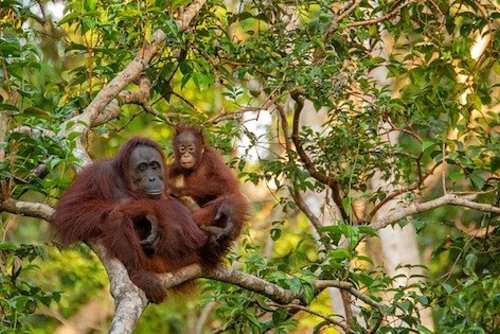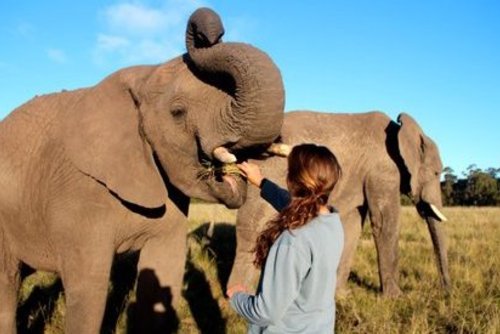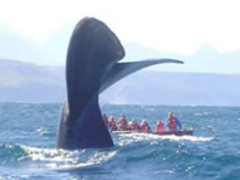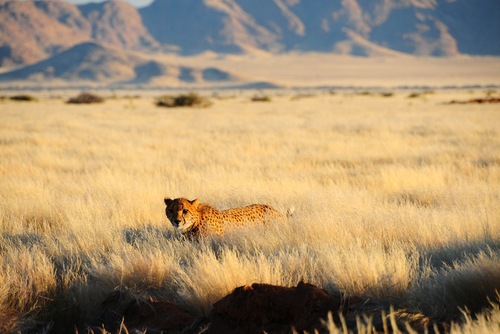It has released 300?600 animals per year into the Mayan Biosphere Reserve (MBR). The project is also a focal point for environmental education and awareness-raising in the MBR through its Environmental Education and Interpretation Centre. The second project is a Sea Turtle Conservation Centre. Its goal is the conservation of the endangered sea turtles that come to beaches on the Pacific Coast to nest. The primary way to conserve the turtles is to collect and incubate as many eggs as possible. ARCAS has also a caiman and iguana breeding programme, mangrove reforestation and environmental education.
SPECIES: The centre receives many different species from the MBR, which include: birds (parrots, scarlet macaws, toucans, aracaries), mammals (spider and howler monkeys, raccoons, coatimundis, pacas, margays, kinkajous, peccaries, bairds tapirs, jaguars) and reptiles (iguanas, turtles, crocodiles, caimans). The seaturtles are: Olive Ridley Sea Turtle, Leatherback Sea Turtle.
HABITAT: Tropical forest, tropical beach, mangrove coastal wetland.
GEOGRAPHIC LOCATION: The Wildlife Centre is near the city of Flores; the Seaturtle Conservation Project is on the Pacific Coast.
TRAVEL INFORMATION: Airplane to Guatemala City, then bus to Flores or Monterrico, then by boat to the projects.
DURATION: For generic volunteers min. 1 week. For internships or research projects, min. 1 month.
PERIOD: Year round for the Wildlife Centre. From June to November, with a peak in August and September, for the Seaturtle Project.
AGE: Min. 18.
QUALIFICATIONS AND SKILLS: No specific skills required for generic volunteers. Candidates for internships or research projects must be students or researchers in a conservation related field.
VOLUNTEERS WORK: Volunteers help cleaning cages and feeding and caring for the animals. Special projects may include: observing the animals in the rehabilitation area, building cages, animal releases, etc. Research and internship opportunities are in the area of wildlife veterinary medicine, rehabilitation, nutrition and environmental education. In the Seaturtle Project volunteers assist in patrolling beaches at night in search of nesting sea turtles, collection and burial of eggs in the hatcheries and collection of data. Volunteers can also take part in caiman breeding, mangrove reforestation, construction and upkeep of park facilities and environmental educational activities in area schools. Everyone is expected to help in house cleaning and dish washing.
LANGUAGE: English, basic Spanish is highly desirable.
ACCOMMODATION: Wildlife Rescue volunteers live in a house with toilet facilities and solar power. Sheets are provided, own sleeping bag useful in cooler months (Dec. ? Feb.). Kitchen/dining (and socialising) room is in a separate facility. The Seaturtle Project provides comfortable housing withbeds, mosquito netting, toilets, kitchen facilities and12V solar power.
COST: US$60?80/week for room and board in both projects. Volunteers must pay all travel expenses.
LONG TERM: Volunteers can stay for as long as they want. Volunteers can also spend some time in each project.
APPLICATION: A simple application for the regular volunteer programme. For the research and internship opportunities candidates must send a letter of reference from their university, a short essay explaining their personal motivation for participating in the project, a CV and 3 passport-size photographs.
ARCAS
Country: Guatemala
Location: Guatemala
ARCAS has 2 projects: a Wildlife Rescue and Rehabilitation Centre, established in 1990, in order to rescue, rehabilitate and release wild animals confiscated from traffickers.
Update Listing
Apply to update this profile.
Learn more about advertising opportunities or contact us for details.
ARCAS Reviews

Related Opportunities
Animal Rescue Centre Programs in Ecuador
- LEAD Adventures South America
- Ecuador
- 2 weeks to 3 months
- 500 to 1000 £ Pound (UK)
Care for Bears in Canada
- Fronteering
- Western Canada
- 3 months to 6 months
- 1250 to 2500 $ Dollars (US)
Help to Conserve Turtles in Costa Rica
- Oyster Worldwide
- Costa Rica, Central America
- 1 week to 3 months
- 750 to 3000+ £ Pound (UK)
Monkey Conservation Program, Kenya
- Colobus Conservation
- Kenya
- < 1 week to 1 Year+
- 100 to 2000 $ Dollars (US)
Primate Rehabilitation Project
- Wild Inside Adventures
- Mpumalanga, South Africa
- 1 week to 3 months
- 250 to 2500 £ Pound (UK)
Sea Turtle Conservation & Environmental Protection, Costa Rica
- Jamso Trainee GmbH
- Puntarenas
- 2 weeks to 6 months
- 250 to 3000+ $ Dollars (US)
Sea Turtle Conservation Project in Central America
- The Global Work & Travel Co.
- Costa Rica
- 2 weeks to 3 months
- 1500 to 1500 £ Pound (UK)
Turtle Conservation: Zanzibar
- Backpacking Tours
- Zanzibar
- 1 week to 6 weeks
- 750 to 3000+ £ Pound (UK)
Related Articles
Volunteer with Penguins
Find volunteer projects with penguins on our website, travel abroad and help conservation efforts. You could spend a ...
19/06/2012
Best Places to See Wildlife in Asia
Are you planning a trip to Asia? Would you like to see animals in their natural habiat and avoid unethical zoos and mari...
20/10/2017
Volunteer in Borneo
Borneo is the third largest island in the world and home to some of the most endangered wildlife on the planet. By ap...
15/03/2015
Volunteer with Animals Abroad
Do you want to help animals? Find rewarding wildlife volunteering programs around the world. Short and long term oppport...
12/11/2009
Volunteer with Whales
Find whale volunteer projects in places like Africa where you can help conservation efforts and make a real differenc...
21/05/2012
Volunteer with Cheetahs in Africa
Interested in helping cheetah conservation efforts? Search rewarding volunteer programs at sanctuaries in countries l...
19/05/2012

